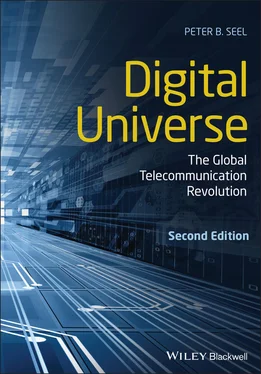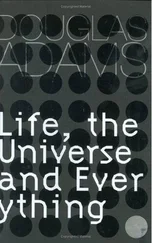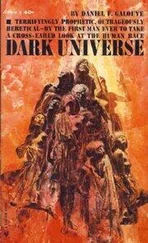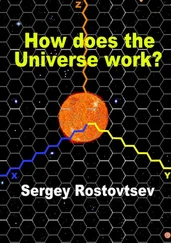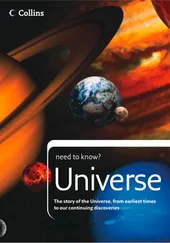9 Chapter 10Figure 10.1 John Perry Barlow...Figure 10.2 Dr. Jon Postel of USC...Figure 10.3 Ira Magaziner, Clinton...
10 Chapter 11Figure 11.1 A man holds a portrait...Figure 11.2 She was shot in the...Figure 11.3 Satellite television...Figure 11.4 A mobile phone tower...Figure 11.5 A tour guide in Vietnam...Figure 11.6 Japanese tourists taking...Figure 11.7 Classic Hollywood films...
11 Chapter 12Figure 12.1 Edward Snowden talking...Figure 12.2 Citizenfour director...Figure 12.3 The privacy continuum...Figure 12.4 Surveillance television...Figure 12.5 A map of 604 surveillance...Figure 12.6 Facial recognition is being...Figure 12.7 Shoshana Zuboff is professor...
12 Chapter 13Figure 13.1 An aerial photo of...Figure 13.2 Alan Turing in the...Figure 13.3 A schematic drawing...Figure 13.4 IBM’s Watson...Figure 13.5 World champion...
13 Chapter 14Figure 14.1 Heilig’s Sensorama...Figure 14.2 Cinematographer and...Figure 14.3 Cisco’s TelePresence...Figure 14.4 Escaping Criticism is...Figure 14.5 Doctoral student Ivan...Figure 14.6 Dr. Claude Shannon was...Figure 14.7 Computer graphics and...Figure 14.8 In the 2002 futuristic...Figure 14.9 The author’s crude avatar...Figure 14.10 Ashe is the frost archer avatar...
1 Chapter 1Table 1.1 The global diffusion...
2 Chapter 5Table 5.1 The seven layer...Table 5.2 Evolution of the...
3 Chapter 6Table 6.1 Internet hosts...
4 Chapter 8Table 8.1 Mobile phone...Table 8.2 The evolution of...
5 Chapter 10Table 10.1 Key events in...
6 Chapter 11Table 11.1 A hierarchy of internet censorship
7 Chapter 14Table 14.1 Electronic game evolution
1 Cover
2 Title page Peter B. Seel Colorado State University Fort Collins, Colorado
3 Copyright
4 Dedication
5 Table of Contents
6 Preface
7 Acknowledgments
8 Key Terms and Abbreviations
9 Begin Reading
10 Index
11 End User License Agreement
1 i
2 ii
3 iii
4 iv
5 v
6 vi
7 vii
8 viii
9 ix
10 x
11 xi
12 xii
13 xiii
14 xiv
15 xv
16 xvi
17 1
18 2
19 3
20 4
21 5
22 6
23 7
24 8
25 9
26 10
27 11
28 12
29 13
30 14
31 15
32 16
33 17
34 18
35 19
36 20
37 21
38 22
39 23
40 24
41 25
42 26
43 27
44 28
45 29
46 30
47 31
48 32
49 33
50 34
51 35
52 36
53 37
54 38
55 39
56 40
57 41
58 42
59 43
60 44
61 45
62 46
63 47
64 48
65 49
66 50
67 51
68 52
69 53
70 54
71 55
72 56
73 57
74 58
75 59
76 60
77 61
78 62
79 63
80 64
81 65
82 66
83 67
84 68
85 69
86 70
87 71
88 72
89 73
90 74
91 75
92 76
93 77
94 78
95 79
96 80
97 81
98 82
99 83
100 84
101 85
102 86
103 87
104 88
105 89
106 90
107 91
108 92
109 93
110 94
111 95
112 96
113 97
114 98
115 99
116 100
117 101
118 102
119 103
120 104
121 105
122 106
123 107
124 108
125 109
126 110
127 111
128 112
129 113
130 114
131 115
132 116
133 117
134 118
135 119
136 120
137 121
138 122
139 123
140 124
141 125
142 126
143 127
144 128
145 129
146 130
147 131
148 132
149 133
150 134
151 135
152 136
153 137
154 138
155 139
156 140
157 141
158 142
159 143
160 144
161 145
162 146
163 147
164 148
165 149
166 150
167 151
168 152
169 153
170 154
171 155
172 156
173 157
174 158
175 159
176 160
177 161
178 162
179 163
180 164
181 165
182 166
183 167
184 168
185 169
186 170
187 171
188 172
189 173
190 174
191 175
192 176
193 177
194 178
195 179
196 180
197 181
198 182
199 183
200 184
201 185
202 186
203 187
204 188
205 189
206 190
207 191
208 192
209 193
210 194
211 195
212 196
213 197
214 198
215 199
216 200
217 201
218 202
219 203
220 204
221 205
222 206
223 207
224 208
225 209
226 210
227 211
228 212
229 213
230 214
231 215
232 216
233 217
234 218
235 219
236 220
237 221
238 222
239 223
240 224
241 225
242 226
243 227
244 228
245 229
246 230
247 231
248 232
249 233
250 234
251 235
252 236
253 237
254 238
255 239
256 240
257 241
258 242
259 243
260 244
261 245
262 246
263 247
264 248
265 249
266 250
267 251
268 252
269 253
270 254
271 255
272 256
This book is about computer-based digital technologies and their substantial effects on contemporary life. Around the world, digital displays can be seen everywhere, from small ones on mobile phones to enormous LED screens in urban plazas. The typical worker in the information age spends her or his day engrossed in digital technology, then goes home to yet another set of digital devices for communication, information-processing, and entertainment. These technologies have given netizens an unparalleled range of tools for communication and connectivity. Anyone in the world with a mobile telephone – presently five billion people of the Earth’s population of eight billion – can be reached with a few keystrokes. Many of these subscribers will have fast access to a full range of net applications as they upgrade to 5G services, and the mobile phone may be one key solution to bridging the digital divide between the information “haves” and “have nots” on the planet.
This is an unprecedented era in the evolution of humanity. During the lifetime of those born after 1940 there has been an astonishing augmentation of human intellect by online access to all of the world’s collective stored information. The barriers to planetary communication presented by the babel of human languages have been diminished by online translation, and their quality will improve in this century. Access to this sea of information is not enough – we as a society must have the intellectual tools to make sense of it all and the individual and societal wisdom to use it wisely. Digital devices have improved our access to knowledge, but cannot make us wise.
In my own lifetime, I have witnessed the power of television to telecast events in real time as they occur anywhere on the planet or from our Moon. I started my career in educational technology and media production just as the first personal computers appeared on desktops in the workplace. We connected them to VCRs to deliver computer-based training programs linked to related video programs. While working on my doctorate in the early 1990s, I recall a friend pulling me into a computer lab to see something new online called the World Wide Web. At the time, we had no clue that a day would come when anyone could create a personal website in less than 30 minutes using templates available at Weebly, Wix, or Google sites. The notion that a website dedicated to building social relationships – Facebook – would eventually have over 2.7 billion worldwide subscribers would have been hilarious at its inception at Harvard in 2004. The concern now is that the US-based technology giants – Facebook, Google, Apple, and Twitter – have too much economic and political power and should be broken up. Data about their subscribers have been “weaponized” by third parties and used in anti-democratic ways. Increasing concerns about protecting personal privacy online and offline have led to new legislation in the European Union and the United States to give net users greater control over their personal data.
Читать дальше
